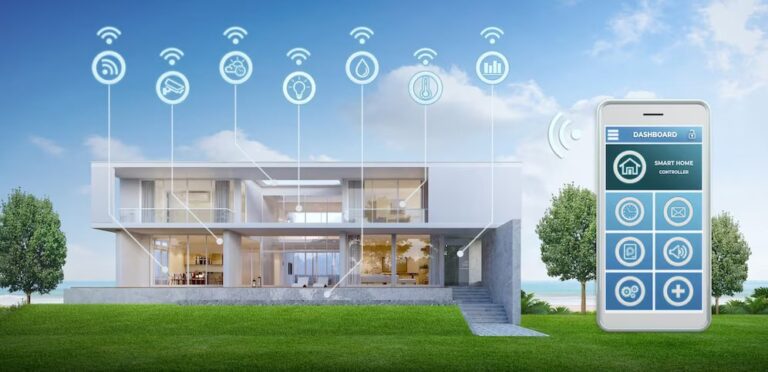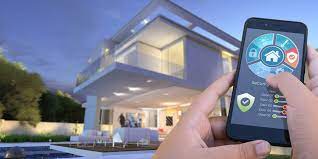Smart Living Embracing Technology and Sustainabilit
Smart Living
Smart living is more than a buzzword; it’s a lifestyle revolution that blends cutting-edge technology with sustainable practices to create a more efficient, comfortable, and eco-friendly way of life. In an era where resources are finite and time is precious, smart living offers a roadmap to a future where our homes, workplaces, and daily routines work in harmony with our needs and the planet’s health.
The concept of smart living encompasses three core pillars: technology, sustainability, and intentional lifestyle choices. By integrating smart devices, adopting eco-conscious habits, and making mindful decisions, individuals can enhance their quality of life while reducing their environmental footprint. This article explores how these elements come together to redefine modern living, offering practical insights for anyone looking to embrace this transformative approach.
From smart homes that adjust lighting based on your mood to sustainable practices that minimize waste, smart living is about creating systems that work smarter, not harder. As we dive into the components of smart living, you’ll discover actionable steps to make your life more connected, efficient, and aligned with the needs of the 21st century.
Smart Technology: The Backbone of Modern Living
Technology is at the heart of smart living, enabling us to automate tasks, optimize resources, and stay connected like never before. The rise of the Internet of Things (IoT) has transformed everyday objects into intelligent systems that communicate and adapt to our needs. From smart thermostats to voice-activated assistants, these innovations are reshaping how we interact with our environments.
One of the most prominent examples of smart technology is the smart home. Devices like smart lights, thermostats, and security systems can be controlled remotely via smartphones or voice commands. For instance, a smart thermostat learns your schedule and adjusts the temperature to save energy while keeping you comfortable. Similarly, smart lighting systems can dim or change colors based on the time of day or your preferences, enhancing both ambiance and energy efficiency.
Beyond the home, smart technology extends to wearables and personal devices. Fitness trackers monitor your health metrics, such as heart rate and sleep patterns, empowering you to make informed decisions about your well-being. Smart appliances, like refrigerators that notify you when you’re low on groceries, streamline daily tasks and reduce waste. These technologies not only save time but also foster a more proactive approach to managing our lives.
However, adopting smart technology isn’t just about convenience—it’s about integration. The key to successful smart living is choosing devices that work seamlessly together. Platforms like Amazon Alexa, Google Home, or Apple HomeKit allow different devices to communicate, creating a cohesive ecosystem. For example, you can set up a routine where your smart coffee maker starts brewing when your alarm goes off, and the lights gradually brighten to ease you into the day.
While the benefits are clear, there are challenges to consider. Privacy concerns, such as data security and surveillance risks, are valid when integrating connected devices. To mitigate these, opt for reputable brands, keep software updated, and use strong, unique passwords. By balancing convenience with caution, smart technology can truly enhance your lifestyle without compromising security.
Sustainable Practices: Living Lightly on the Planet
Smart living isn’t just about leveraging technology—it’s about using it responsibly to support sustainability. With climate change and resource depletion as pressing global issues, adopting eco-friendly practices is essential for preserving our planet for future generations. Smart living provides tools and strategies to reduce waste, conserve energy, and live more sustainably.
One of the simplest ways to embrace sustainability is through energy efficiency. Smart home devices, such as energy-monitoring plugs and solar-powered gadgets, help you track and reduce your energy consumption. For example, a smart power strip can cut off power to devices in standby mode, eliminating “vampire energy” that accounts for a significant portion of household electricity use.
Water conservation is another critical aspect of sustainable smart living. Smart irrigation systems, for instance, use weather data to water your garden only when necessary, preventing overwatering. Similarly, smart showerheads can monitor water usage and alert you to reduce consumption, helping you save both water and money.

Waste reduction is equally important. Smart living encourages practices like composting, recycling, and using reusable products. Smart waste bins can sort recyclables automatically, making it easier to reduce landfill contributions. Additionally, apps that track food inventory can help you plan meals and avoid food waste, a significant issue globally.
Sustainability also extends to transportation. Smart cities are integrating electric vehicle (EV) charging stations and bike-sharing programs to reduce carbon emissions. At home, you can adopt smart transportation solutions like route-optimizing apps that minimize fuel consumption or carpooling platforms that reduce the number of vehicles on the road.
By combining technology with sustainable habits, smart living allows you to make a positive impact without sacrificing convenience. Small changes, like switching to LED bulbs or using a smart thermostat, can add up to significant environmental benefits over time.
Intentional Lifestyle Choices: The Human Element
While technology and sustainability are critical, smart living is ultimately about making intentional choices that align with your values and goals. This means prioritizing mental and physical well-being, fostering meaningful connections, and creating a balanced life that supports both personal growth and community well-being.
One key aspect of intentional living is time management. Smart tools like calendar apps and productivity trackers can help you prioritize tasks and avoid burnout. For example, apps like Todoist or Notion allow you to organize projects, set reminders, and track progress, freeing up mental space for creativity and relaxation.
Mental health is another cornerstone of smart living. Meditation apps, such as Headspace or Calm, use guided sessions and sleep stories to reduce stress and improve focus. Wearable devices that track sleep patterns can also help you optimize your rest, ensuring you wake up refreshed and ready to tackle the day.
Physical health is equally important. Smart living encourages integrating fitness into your routine, whether through home workouts guided by fitness apps or outdoor activities tracked by smartwatches. Meal-planning apps can help you prepare nutritious meals tailored to your dietary needs, promoting long-term health.
Community engagement is another vital component. Smart living means fostering connections through technology, such as virtual meetups or neighborhood apps like Nextdoor that encourage local collaboration. By staying connected, you can share resources, support local businesses, and build a sense of belonging. Finally, intentional living involves continuous learning. Online platforms like Coursera or Khan Academy offer courses on everything from coding to sustainable gardening, empowering you to acquire new skills and stay informed about smart living trends.
The Future of Smart Living
As technology evolves, so does the potential for smart living. Emerging innovations like artificial intelligence (AI), 5G connectivity, and renewable energy advancements promise to take smart living to new heights. For example, AI-powered home systems could predict your needs with greater accuracy, while 5G could enable faster, more reliable connections for smart devices.
Sustainability will also play a larger role. Advances in renewable energy, such as affordable solar panels and wind turbines, will make it easier for households to go off-grid. Smart cities will integrate green infrastructure, like vertical gardens and energy-efficient buildings, to create urban environments that prioritize both people and the planet.
The future of smart living will also focus on inclusivity. Efforts are underway to make smart technology more accessible, ensuring that people of all income levels can benefit from its advantages. Open-source platforms and affordable devices will democratize access, making smart living a global movement. However, the future isn’t without challenges. Ethical considerations, such as ensuring data privacy and addressing the digital divide, will be critical. By advocating for transparent policies and equitable access, we can ensure that smart living benefits everyone.
In conclusion, smart living is a dynamic, evolving concept that combines technology, sustainability, and intentional choices to create a better future. By embracing these principles today, you can build a lifestyle that’s not only efficient and fulfilling but also kind to the planet. Start small—whether it’s installing a smart thermostat, composting your waste, or prioritizing self-care—and watch how these changes ripple outward to transform your life and the world around you.






